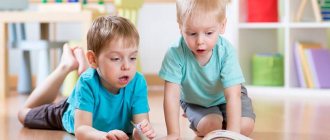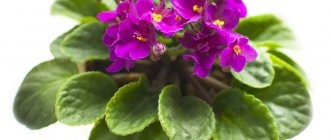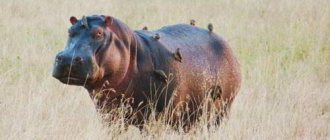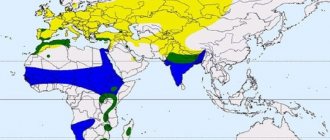Tasks
- Enriching children's vocabulary.
- Teaching pupils how to write descriptive stories using reference cards (pictograms).
- Expanding ideas about the world around us, its main seasonal changes, plants, and living inhabitants.
- Formation in each child of social activity, the ability to express their own opinion, explain their point of view.
- General development of cognitive processes.
This summary on speech development in the senior group allows you to conduct a lesson that may be the final one for a block of autumn topics.
NOD for speech development “Birds of Migratory”.
Author: Davletova Gulnara Urumbaevna
Educational institution : MBDOU "Kindergarten" s. Gorkovskoe
Locality: Novoorsk village, Orenburg region
Topic: GCD for speech development “Birds of Migratory”.
Library Section: Lesson Developments
Publication date: 06.04.2019
Goals: vocabulary development: to activate the names of migratory birds. Generalize the concept of “migratory birds”, teach children to understand the figurative meaning of riddles, and form the grammatical structure of speech;
Related speech: continue to teach children to answer questions fully and accurately, constructing sentences of 4-6 words, develop skills in composing a story using supporting diagrams (drawings).
Equipment: support diagrams, photographs of migratory birds, ball.
Contents of organized children's activities
Organizing time
— Today in class we will have to complete many different tasks. To successfully cope with them, we need to be properly prepared.
Compiling a story using reference pictures “Why do birds fly south?”
- Children, you probably guessed who we will talk about in class today. (Children's answers.) That's right, about migratory birds.
—What birds do we call migratory? (Migratory birds are those birds that are afraid of the cold and fly south to warmer climes in the fall).
— Birds fly south, gathering in flocks. They fly in a flock, in a wedge, or alone. The explanation is accompanied by an illustration. Name the migratory birds you know. (Children name the birds, and the teacher displays their images on the magnetic board.)
Puzzles
There is a palace on the pole. There is a singer in the yard. And his name is... (starling).
Whoever is at the Christmas tree is counting the bitch: “Ku-ku. Cuckoo”? (cuckoo).
If he wants, he will fly straight, if he wants, he hangs in the air, and falls like a stone from the heights. And in the fields he sings, sings (the lark).
Flies to us with warmth, Having traveled a long way, Sculpts a house under the window from grass and clay (swallow).
Wanders through dirty swamps, catches frogs in them, stupid jumpers (heron, crane).
“Which bird do you want to talk about?” The teacher invites the children to describe the bird, showing a photograph, and name its characteristic features. The teacher can help the children with questions.
— Is this bird large or small?
- Name the parts of the bird’s body, the features of its appearance: what kind of wings, beak, paws does it have? If a child says “long beak”, the teacher “then we can call him long-beaked”, “black wings” - “black-winged”, etc.
This is a starling. What kind of tail does he have? (Short). So what kind of starling? - Short-tailed. This is a swallow, it has a long tail. So what kind of swallow? – long-tailed. This is a rook, it has a sharp beak. What rook? - Sharp-beaked. Does he have a black wing? - Blackwing.
Physical education lesson “They fly away - they fly away”
Soon white snowstorms Snow will be lifted from the ground (children raise their hands from the bottom up) The cranes fly away, fly away, fly away (imitation of the flight of cranes) You can’t hear the cuckoos in the grove (hands to your ears) And the birdhouse is empty (hands in front of you) The stork flaps its wings (flapping its hands) Flies away, flew away (imitation of bird flight).
Didactic exercise “What can birds do?” Children, let's remember what birds can do.
They walk, peck, take off, fly, hatch, jump, hover, feed, care for,. sit, sing.
Game “One-Many” - Children, come out on the carpet, we’ll play with you.
Crane-crane, cuckoo-cuckoo, duck-duck, heron-heron, rook-rook, starling-starling.
Game “Name it kindly”
“Now let’s warm the wintering birds with kind words.” An affectionate word is like the sun. The game is played on the carpet.
Starling starling, crane crane, swan swan, cuckoo cuckoo, duck duck, nightingale.
- Well done! I hope that the birds heard our affectionate and kind words.
Summary of the lesson on speech development "Wintering birds"
author: Turshatova Olga Nikolaevna in
feeder MBDOU No. 2 of compensating type
Summary of the lesson on speech development "Wintering birds"
Lesson notes on
speech development in the middle group
"Wintering Birds"
Target:
Clarify and expand ideas about wintering birds. To consolidate knowledge about the structure of birds. Form the concept of “wintering birds”. Learn to answer questions in complete sentences. Make sentences correctly.
Tasks:
— Educational:
clarify and expand children’s ideas about wintering birds and their appearance; activate vocabulary on the topic (wintering birds, bullfinch, tit, feeder, bird food, takes care of birds); learn to answer questions in complete sentences.
— Developmental: develop children’s cognitive interest in the life of wintering birds, observation, cognitive abilities - speech, memory, attention, logical thinking.
— Educational:
develop the ability to listen to the stories of other children; cultivate a caring attitude towards wintering birds.
Demo material:
riddles about wintering birds, a letter, a feeder, food, cut out birds
(
wintering and migrating, a diagram for a story about a bird, pictures of birds cut into pieces
.
Lesson progress
Educator:
Guys, I’m going to kindergarten today, and a bullfinch is flying towards me. I look, and there is an envelope in his beak. He threw it to me from above and flew away. I wonder what is written in the letter, let's read it?
Children:
Let's
I, the Bullfinch, live in the forest. Today there is a commotion : some birds have flown away, others remain.
I do not get it. And signature: snow
Educator:
Let us get up, go into the forest and figure out which birds should fly away and which ones should stay with us and send a letter to the bullfinch.
Children:
Let's.
Educator:
One, two, three, turn around and find yourself at the edge of the forest! The children turn around and find themselves at the edge of the forest. Bird trills sound.
Educator
: Look, guys, how beautiful it is around. Do you hear the birds singing? The bullfinch's friends are meeting us.
Educator:
Guys, look how many birds there are on the Christmas tree. And here is the bullfinch himself, let’s ask him to tell him what happened.
Educator:
Bullfinch, bullfinch, what happened, what’s all this commotion?
Guys, he says that he won’t understand which birds should stay and which ones should fly away. Let's take a look and figure out whether all the birds have flown away or not.
Children come up to the Christmas tree, look and name the birds: swallow, starling, cuckoo.
Educator:
What kind of birds are these?
Children:
Migratory.
Educator:
Why are they called that?
Children:
Because they fly to warmer climes.
Educator:
Why are they flying away? Why can't they stay here with us?
Children:
They will freeze from the cold and die of hunger, because these birds are insectivores, they feed on insects, and in winter all insects sleep and hide in the ground. Let's send these birds to the south, where they can feed themselves.
Educator:
Guys, what birds are left? Let's name them.
Children call
birds: tit, pigeon, bullfinch, sparrow, woodpecker, crow, magpie.
Educator:
What kind of birds are these?
Children:
Wintering.
Educator:
Why are they called that?
Children:
Because they spend the winter with us, flying from the forests closer to humans.
Educator:
Bullfinch, you understand which birds should stay with us and which ones should fly away.
Children sit on chairs
Guessing riddles.
Educator:
Guys, do you like to solve riddles?
Children:
Yes
Educator:
- A mischievous boy in a gray army jacket
Snoops around the yard, collecting crumbs. (sparrow)
- Red-breasted, black-winged, loves to peck grains,
With the first snow on the mountain ash he will appear again. (bullfinch)
- Fidgety, small, all yellow bird,
Loves lard and wheat. (titmouse)
- I'm knocking on wood, I want to get a worm,
Even though he hid under the bark,
It will still be mine. (Woodpecker.)
- He flies all night, catching mice.
And it will become light,
Sleep flies into the hollow. (Owl.)
(Children attach pictures of birds to the board)
Didactic game for attention “Which bird is missing?”
Educator:
Guys, the bullfinch asks, do you know what parts birds are made of?
Educator:
Children, let's look at the bird and tell the bullfinch about birds.
Educator:
Well done. Guys, the bullfinch asks, do you know what birds eat?
Children:
Grains, bread crumbs, cereals, berries, lard.
Game "Collect the picture"
Children are given envelopes with cut-out pictures depicting wintering birds.
- Take out the pictures cut into pieces and try to assemble them. (For children who find it difficult to complete the task, the teacher gives visual support in the form of a complete picture.)
The teacher asks the children.
- Tell me what kind of birds did you make? And you?
- Now guys, let's play
Physical education minute.
Birds raise their beak (raise and lower their head)
.
The birds spread their wings (raise and lower straight arms)
.
Birds peck grains (squat and tap their index fingers on their knees)
.
The birds sing songs (turn right and left, waving their arms and saying “Shadow - shadow”
).
Birds stretch their legs (alternately raise their legs, bending their knees)
.
Birds jump and fly (jumping on two legs)
We inhale air through our nose (slowly raise our hands - inhale, release - exhale)
.
The children flew and sat on the chairs.
Educator: A
Now guys, listen, I’ll tell you about the sparrow, and you listen carefully. (teacher's story)
Educator:
And now, whoever of you wants to talk about the sparrow, you can look at the diagram when telling it. (children's stories
Educator:
and you would like to help the birds so that they do not die of hunger.
Children:
Yes
Educator:
Here we have a feeder, we will hang it on our site today, and every day we will put food for the birds in the feeder.
Result:
Our walk through the forest has come to an end.
What did you enjoy doing most today? What wintering birds do you remember? Can you name them? What new and interesting things did you learn today? How can we take care of birds. Summary of the lesson on speech development "Wintering birds"






